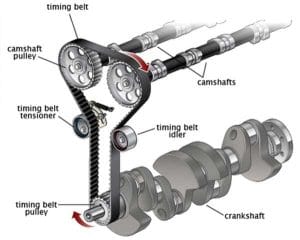This week in our “Getting to Know” series, we are look at timing belts, a core component of a vehicle which our alternative dispute resolution team receives many contacts about from consumers.
What is a timing belt?

How important is the tension of the belt?
The tension of the timing belt is critical. If it’s too loose, it will “whip”, but if it is too tight, it will place excessive strain on the associated engine components.
What happens when a timing belt breaks?
When a timing belt is faulty and comes apart, the pistons in the engine will collide with the valves in the cylinder head, generally causing the valves to bend or brake. The stress of the impact can also cause damage to cylinder heads, cam shafts, valve guides and rockers. Also, in extreme cases, pistons can be subject to damage which is often expensive to repair.
How often does a timing belt need to be replaced?
The lifespan of a timing belt is affected by mileage, wear and tear, and essentially deteriorates with age. Vehicle manufacturers will tend to specify when the belt should be replaced. This ranges from 60,000 miles or six years, to 10 years or 150,000 miles.
Where can I get a timing belt replaced?
To find a garage to replace a timing belt, visit The Motor Ombudsman’s Garage Finder where all local accredited business are listed.
Image courtesy of 1st Stop Cars Rochford.







